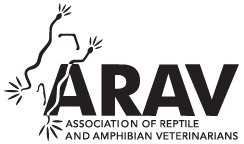Comparison of Three Point-of-Care Analyzers for the Measurement of Lactate Concentration in Chelonians
Blood lactate concentration has been identified as a prognostic indicator in chelonians. However, comparison among various studies about lactate concentration is hindered by the fact that various point-of-care analyzers are used. This study evaluated agreement, correlation and biases between three commonly used analyzers, the Lactate Plus (Nova), i-STAT (Abbott) and EPOC (Heska). Forty chelonians of ten different species were included in the study. The animalswere recruited from a rehabilitation center and from the clientele of a veterinary teaching hospital, and presented with a variety of health statuses and a wide range of lactate concentration. A single blood sample obtained from each individual was placed in a heparinized tube and analyzed concomitantly by two analyzers per sample (20 chelonians for each analyzer). Agreement between the lactate and blood analyzers was evaluated via a Bland-Altman plot and correlation via a Spearman correlation coefficient. Bias was determined using a Passing-Bablok regression analysis. There was a fair agreement between the three techniques, but agreement was decreased for lactate concentrations above 5 mmol/L. Both blood analyzers reported consistently greater lactate concentrations compared to values obtained with the Lactate Plus, with a positive proportional bias. Correlations between the Lactate Plus and the two other point-of-care analyzers were excellent, 97.0% and 92.8% with the i-STAT and the EPOC analyzers respectively. This study highlights the need to conduct studies in various reptile species to evaluate the performance of point-of-care analyzers.Abstract
Contributor Notes



